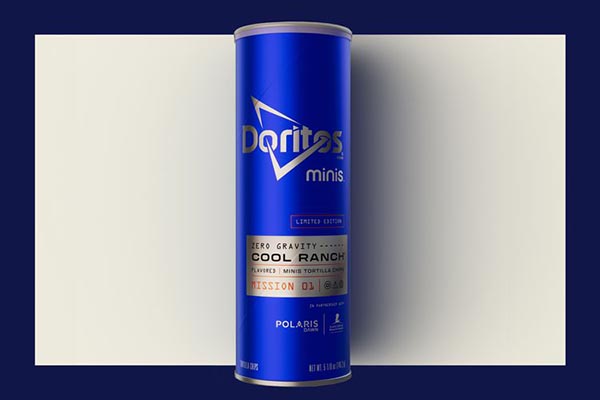
Poster Children
One casualty, perhaps, of the streaming era of movies is the loss of the movie poster. Although there is some image used on Netflix, etc., you miss a lot of the artistry of movie posters when reduced to a small icon. Which is a shame, as many classic movies had posters (aka “one-sheets”) that have become as iconic—if not more so—than the movies they advertised. The Guardian presents a photo gallery of some classic posters gleaned from a new book.
In a new book edited by Tony Nourmand, a vast selection of posters spanning the past century offers insight into contemporaneous tastes and styles, showcasing the medium’s eye-catching artistic innovations.

They might even give you some ideas for what to watch next.
Key Works of Literature
Looking to practice touch typing? Via Boing Boing, the site Entertrained lets you type along with classic novels.
Once you choose a novel — like Dracula, Les Misérables, The Great Gatsby, and more — you can type along to the words of the book, which change colors as you progress. The site tracks your typing speed, consistency, and spelling.
It’s kind of like literary karaoke.

It’s also a great way to read a novel in a much more interactive way—although typing the entirety of Les Miserables would be, indeed, miserable.
Voices of the Past
What is the first recorded human voice? If you’re tempted to cite “Thomas Edison” and his intoning of “Mary had a little lamb,” you’d be wrong, and need to go back at least 20 years earlier. Via Laughing Squid:
BBC Global spoke with Dr. Patrick Feaser of FirstSounds.ORG about the very first recording of the human voice in 1860 by Edouard-Léon Scott de Martinville, an early sound pioneer,
Scott de Martinville was a Parisian printer and bookseller, and amongst the things he printed were science textbooks. Not content with just printing them, he also read them, and sought to stay up-to-date on many of the latest advances in science. Inspired by the latest developments—as it were—in photography, he had the idea of doing for sound and voice what photography did for light and image: capture them. While proofreading a physics textbook, he came across illustrations of how the human auditory system worked.
Thus inspired, Scott de Martinville went on to patent, in 1857, the phonautograph, the earliest known device for recording sound. However, while it did record sound, it was unable to play it back, unlike later inventions. What the phonautograph did was transcribe a visual representation of a particular sound. Not intended for home entertainment, it was primarily meant as a research tool for the investigation of sound waves.
In 2008, researchers at the Lawrence Berkeley National Laboratory in Berkeley, Calif., did successfully convert a “phonautogram”—“squiggles on paper”—recorded in 1860 to a digital audio file. Not exactly a progressive-rock epic, it was a 10-second clip of a singer, possibly female, crooning “Au clair de la lune.” It is believed to be the earliest known sound recording of a human voice.
(Poor Charlotte Green, BBC Radio 4’s newsreader, who played the restored phonautogram on her broadcast, but was unable to get through the next story without cracking up.)
As it turns out, as explained in the video above, the reason why you can’t help but crack up listening to that is that it was played back too fast. When researchers slowed it down, they said it sounded more like a male singing—although, to be honest, it sounds more like a bee.
Speaking of which…
Let It Bee
Burt’s Bees is celebrating its 40th anniversary. The singular verb is correct; it’s not the bees themselves that are celebrating, as we suspect Burt has not had the same bees for 40 years. Anyway, via Print magazine, the company has launched its Camp Burt ’84 Summer Merch collection—holy s—t, was 1984 40 years ago?!
Collaborating with branding agency Tavern, the limited-edition drop centers around environmental sustainability and honoring longtime partnerships with the National Parks Service.
For the origin story:
In the summer of 1984, Burt Shavitz picked up a hitchhiker and future business partner, Roxanne Quimby. The couple turned their holistic hobby into a business that is now a multimillion-dollar corporation, all while furthering their mission of environmental sustainability. Since the beginning, Burts Bees‘ founders have intentionally prioritized conservation. Utilizing responsible sourcing, natural ingredients, and recyclable packaging has aided in preserving our land now for a better tomorrow. Starting in the 1990s, Quimby began putting profits toward protecting land threatened by logging. By 2016, the couple had preserved 87,500 acres of land, which they donated to establish the Katahdin Woods and Waters National Monument.

The collection features a line of outdoor apparel and accessories combining vintage-inspired designs from the Burts Bees archives with the longstanding brand aesthetic. Reusable water bottles, hammocks, and towels encourage adventure while mimicking the look of the iconic red and yellow lip balm. T-shirts adorned with Burt riding a motorcycle and the family dog add a personal, vintage-inspired touch.
We do remember once coming across Burt’s Bees insect repellent, which just seemed wrong.
PhoneJokeOpus
Some of you may remember the payphone, public phones located on streetcorners or in other locations that let anyone with a dime (later a quarter) make a phone call. Wildly unhygienic and generally gross, its obsolescence was the one good thing about the advent of the cellphone. Anyway, via Atlas Obscura, one particular public phone still exists—in the Washington D.C. neighborhood of Chevy Chase. The neighborhood name is apt, because it is a phone you use to call for a joke.
The Jokes Phone is the work of Don Rutledge, a substitute teacher at the nearby school who lives across the sidewalk. He bought an old payphone online and spent several months tinkering with it so that it could present passersby with jokes on demand.

There is website that tracks its usage statistics and apparently it has told more than 12,000 jokes since it was installed in May 2023. The most popular? Knock-knock jokes. Although an option to listen to Bob Newhart routines would be appropriate.
Darkwood
Looking for a unique construction option for your next house? Why not build it out of Nxylon, a new super-black material that absorbs 99% of the light that hits it. Says the University of British Columbia:
Professor Philip Evans and PhD student Kenny Cheng were experimenting with high-energy plasma to make wood more water-repellent. However, when they applied the technique to the cut ends of wood cells, the surfaces turned extremely black.
Measurements by Texas A&M University’s department of physics and astronomy confirmed that the material reflected less than one per cent of visible light, absorbing almost all the light that struck it.
They dubbed this “wonder wood” Nxylon (niks-uh-lon), after Nyx, the Greek goddess of the night, and xylon, the Greek word for wood.

Most surprisingly, Nxylon remains black even when coated with an alloy, such as the gold coating applied to the wood to make it electrically conductive enough to be viewed and studied using an electron microscope. This is because Nxylon’s structure inherently prevents light from escaping rather than depending on black pigments.
Nxylon could potentially replace expensive and rare black woods like ebony and rosewood for watch faces. It could also replace onyx in jewelry (but certainly not Onyx in prepress).
Super-black materials are increasingly sought after in astronomy, where ultra-black coatings on devices help reduce stray light and improve image clarity. Super-black coatings can enhance the efficiency of solar cells.
Let There Be—Oh My God!!!!
Who among us has not at some time or other had the need to turn an ordinary flashlight into a flamethrower? OK, a 200,000-lumen flashlight may not be ordinary, but, via Boing Boing, combine one with a magnifying glass and you can throw some serious flames.

The ants don’t stand a chance.
The Spitting Image of Graphene
Was it a good week for graphene news? It’s always a good week for graphene news! A saliva-based cortisol electrochemical sensor with a graphene electrode. It’s called a Point-of-Care (POC) electrochemical biosensor and is said to have a detection limit of 0.24 fg/mL (a “femtogram” (fg) is 10-15 grams). That makes it 100 times more sensitive than existing saliva tests. The idea is to use it to replace more invasive blood tests. From (who else?) Graphene-Info:
The novel non-invasive diagnostic tool provides reliable salivary cortisol profiles and could help identify early onset of stress related disorders, measure the wellbeing of frontline workers and optimize athlete performance. Profiling cortisol in saliva could improve understanding of conditions that affect and are affected by long-term stress levels. Cortisol, a hormone associated with stress, fluctuates throughout the day and varies significantly among individuals. It is often tested through either saliva or blood tests.
Traditional technologies have struggled to provide reliable and sensitive detection from saliva due to it having low concentrations of cortisol. Blood tests, while more accurate, are invasive, especially if they have to be taken multiple times a day.
Internet of Shift
Here come another thing the Internet of Things has ruined: bicycles. Yes, bicycles can now be hacked. But how? Says Gizmodo:
New research suggests that certain brands of bike parts have vulnerabilities that could allow them to be remotely compromised during competitions.
Such as? In a paper presented by researchers from Northeastern University and UC San Diego:
researchers note that, much like modern cars, today’s bicycles are “cyber-physical systems that contain embedded computers and wireless links to enable new types of telemetry and control.” One of the more common cyber-connected systems is the wireless gear shifter, which uses electronic switches instead of traditional control levers to allow bikers shift gears.
Hmm…
Researchers tested shifters sold by Shimano, a Japanese company that is one of the larger cycling parts sellers in the world. Unfortunately, researchers found that Shimano’s shifters are vulnerable to simple “replay attacks” of the sort that are frequently targeted at car fobs. Such attacks, which utilize a radio signal manipulation, allow attackers to capture and weaponize data wirelessly exchanged by hardware parts. In this case, attackers could use such an attack to “unexpectedly shift gears or to jam its shifters and lock the bike into the wrong gear,” Wired writes. Radio hardware necessary to carry out such an attack is relatively inexpensive.
Queen would not approve.
For the Bird
Consider the dodo, the Mauritanian bird hunted to extinction in the 17th century. For centuries, they have been given a bad rap, commonly depicted as slow and dumb. As the conventional story goes, because it had no known predators on Mauritius, the dodo bulked up, lost the ability to fly, and was too trusting of the humans that had arrived on the island. However, according to a new study published in the Zoological Journal of the Linnean Society, they were actually fast and powerful. They also played an important role in the ecosystem of Mauritius. Says LiveScience:
“Was the Dodo really the dumb, slow animal we’ve been brought up to believe it was? The few written accounts of live Dodos say it was a fast-moving animal that loved the forest,” study author Mark Young, a researcher and professor at the University of Southampton in the U.K., said in a statement.
Part of the reason why the standard story of the dodo got started and persisted was that scientists were not particularly clear about which dodo species actually existed. Mythological birds were described in early accounts and records were “confusing, inconsistent, and unreliable.”
To clear that up, the study authors tracked down early specimens, reports of seeing live creatures and early taxonomic descriptions of the species, and sorted fact from fiction. They found that while many species, such as the Nazarene dodo, were fictional, the solitaire (Pezophaps solitaria) — a species that's closely related to the dodo and that some thought was mythological — actually existed and lived on the Mauritian island of Rodrigues.
They also identified an iconic "type specimen" for the dodo — meaning the single preserved specimen that serves as the reference for the species. Using that, they determined that both the dodo and the solitaire were members of the family that includes pigeons and doves.
Researchers also took a closer look at what dodos actually were like.
“Evidence from bone specimens suggests that the Dodo’s tendon which closed its toes was exceptionally powerful, analogous to [those of] climbing and running birds alive today,” study co-author Neil Gostling, an evolutionary biologist at the University of Southampton in the U.K., said in the statement. “These creatures were perfectly adapted to their environment.”
So there. Let there be no more dodo-shaming.
Fishy
Now it’s serious. Climate change is making seafood toxic. Says Food & Wine:
“The prevalence of Vibrio [bacteria] in seafood is expected to increase both globally and in Europe because of climate change, especially in low-salinity or brackish waters,” the European Food Safety Authority succinctly stated in its new report. It added that “resistance to last-resort antibiotics is increasingly found in some Vibrio species.” Vibrio, or V. vulnificus, the Cleveland Clinic explained, is a type of bacteria that can enter the human body after eating “uncooked or undercooked shellfish" or through an open wound in brackish water (the water found in areas where rivers meet the sea). The bacteria, it noted, can “lead to sepsis, shock, and large, spreading blisters that destroy tissues.”
And while the bacteria ia rare—at least for now—the medical journal StatPearls points out V. vulnificus “has the highest number of seafood-related deaths in the United States.”
To determine just how dire the situation can become if global temperatures continue to rise, the European Food Safety Authority reviewed data spanning the last twenty years and “found in approximately 20% of the tested seafood samples, with one out of five positive samples containing pathogenic strains.”
It added that due to the increase in extreme weather events, Europe specifically has seen a rise in Vibrio infections.
Great.
Chiiiips Innnnn Spaaaaace
Planning a trip to the rim of space? Well, you’ll want to bring along snacks. And Doritos has got you covered with their new Doritos minis Cool Ranch Zero Gravity flavored tortilla chips—are designed specifically for eating in zero gravity. Says (who else?) Food & Wine:
The chips not only consider how to keep that delicious cheese dust from floating away but also take into account how one might eat chips in space — they're bite-sized, so you can eat them in one bite and don't have to worry about crumbs polluting the cabin.

The chips are scheduled to make their debut on SpaceX's Polaris Dawn mission later this month. That mission aims to take advantage of Falcon 9 and Dragon's maximum performance and hopes to fly higher than any Dragon mission to date, with the goal of reaching the highest Earth orbit ever flown — seems like something that will totally be possible now that they have the right snacks on board.
This is cool, though:
For the release of the chips, Doritos has partnered with St. Jude Children's Research Hospital. As part of the partnership, Doritos is making a $500k donation to the hospital for its mission of the non-space variety: “Finding cures. Saving children everywhere.”
For the decidedly Earthbound, to get a can, make a donation to St. Jude through a special Doritos-branded page.
This Week in Printing, Publishing, and Media History
August 26
1740: French inventor (hot air balloon) Joseph-Michel Montgolfier born.
1873: American engineer and academic and inventor the Audion tube Lee de Forest born.
1952: American journalist and puzzle creator Will Shortz born.
August 27
1770: German philosopher and academic Georg Wilhelm Friedrich Hegel born.
1871: American novelist and journalist Theodore Dreiser born.
1933: The first Afrikaans Bible is introduced during a Bible Festival in Bloemfontein.
1953: Canadian singer-songwriter, guitarist, and producer Alex Lifeson (né Alexandar Zivojinovich) born.
1971: American publisher, co-founded Random House Bennett Cerf dies (b. 1898).
August 28
1749: German novelist, poet, playwright, and diplomat Johann Wolfgang von Goethe born.
1845: The first issue of Scientific American magazine is published.
1898: Caleb Bradham’s beverage “Brad's Drink” is renamed “Pepsi-Cola.”
August 29
1831: Michael Faraday discovers electromagnetic induction.
1997: Netflix is launched as an internet DVD rental service.
August 30
1797: Mary Shelley, English novelist (Frankenstein) and playwright, born.
1909: Burgess Shale fossils are discovered by Charles Doolittle Walcott, which would serve as the subject for one of the best science books ever written: Stephen Jay Gould’s Wonderful Life.
1956: Comedian, actor, producer, and screenwriter Frank Conniff (“TV’s Frank” from Mystery Science Theater 3000), born.
August 31
1688: English preacher, theologian, and author (Pilgrim’s Progress) John Bunyan dies (b. 1628).
1867: French poet and critic Charles Baudelaire dies (b. 1821).
1895: German Count Ferdinand von Zeppelin patents his navigable balloon. It went over like a...well, actually it went over rather well (for a bit).
1897: Thomas Edison patents the Kinetoscope, the first movie projector.
1944: English illustrator Roger Dean born.
September 1
1795: American publisher, founder of the New York Herald James Gordon Bennett, Sr. born.
1878: Emma Nutt becomes the world’s first female telephone operator when she is recruited by Alexander Graham Bell to the Boston Telephone Dispatch Company. (Appropriately, Lily Tomlin was born on this same day in 1939. The over-50-year-olds out there will get the connection.)
1991: German graphic designer and typographer Otl Aicher dies (b. 1922).















Discussion
Only verified members can comment.